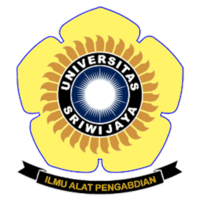IMPLEMENTATION OF TOTAL QUALITY MANAGEMENT AS AN EFFORT TO IMPROVE EDUCATION QUALITY AT UNIVERSITAS NEGERI PADANG
Abstract
Abstract: This study specifically aims to: (1) determine the strategy of implementing TQM in Padang State University Library (UNP), (2) obtain an overview of the leadership of the Head of the Library in the implementation of TQM in the UNP Library, and (3) find out the obstacles in implementing TQM as quality improvement UNP Library. The method used in this study is a case study with a qualitative approach. Collecting data through observation, interviews and document analysis. Subjects in this study were leaders, subdivision heads, library staff, visitors, events, facts, documents and various forms of efforts, programs or library activities. The object in this study is the TQM system implemented in the UNP Library. The results showed that first, the strategy of implementing TQM in the Library of UNP was carried out by continuous improvement, empowering staff, working with teams, identifying users, listening to opinions, process analysis, and statistical process control. Second, the overview of leadership in the UNP Library can be seen from (a) leaders develop their vision and establish the direction and strategy of the Library of UNP to produce the changes needed to achieve the vision, (b) leaders communicate the goals to be achieved through statements and actions to anyone which may be needed to give effect to the formation of a team that understands the vision and strategy of the UNP Library, (c) leaders motivate librarians and library staff, and (d) leaders must be able to create changes that are desired by users and very useful for the progress of the UNP Library through the provision of services new services that are wanted by users and new approaches to work relationships that help the UNP Library be able to compete. Third, obstacles in the implementation of TQM in the Library of UNP are (a) barriers to work culture in the UNP Library can be seen from the difficulty of cultural change, rejection of change, lack of commitment and involvement of workers and distrust of quality; (b) infrastructure constraints seen from facilities, funds, human resources and non-technical constraints; (c) managerial barriers in the UNP Library can be seen from the lack of top management commitment and lack of leadership quality and (d) organizational barriers in the UNP Library can be seen from the ineffectiveness of organizational communication.
Full Text:
205-213Article Metrics
Abstract view : 388 times205-213 - 204 times
Refbacks
- There are currently no refbacks.
